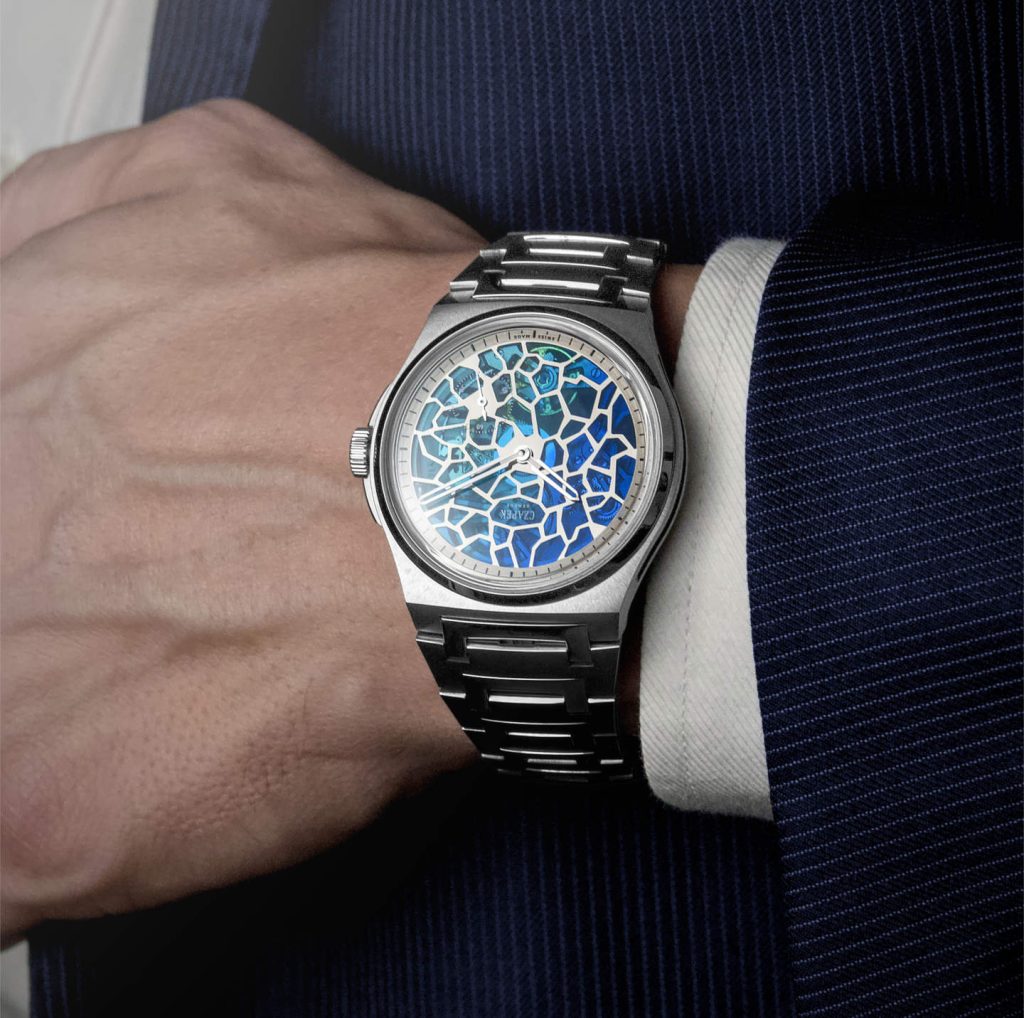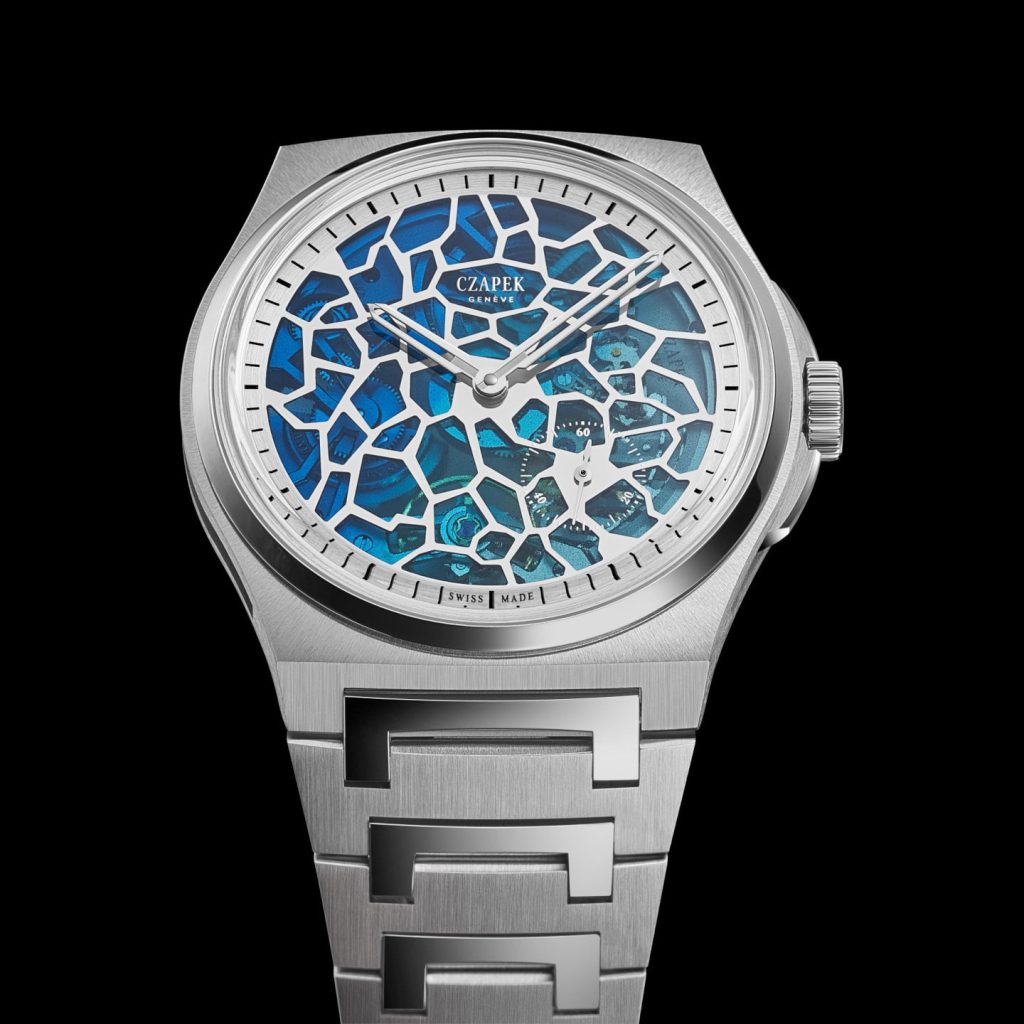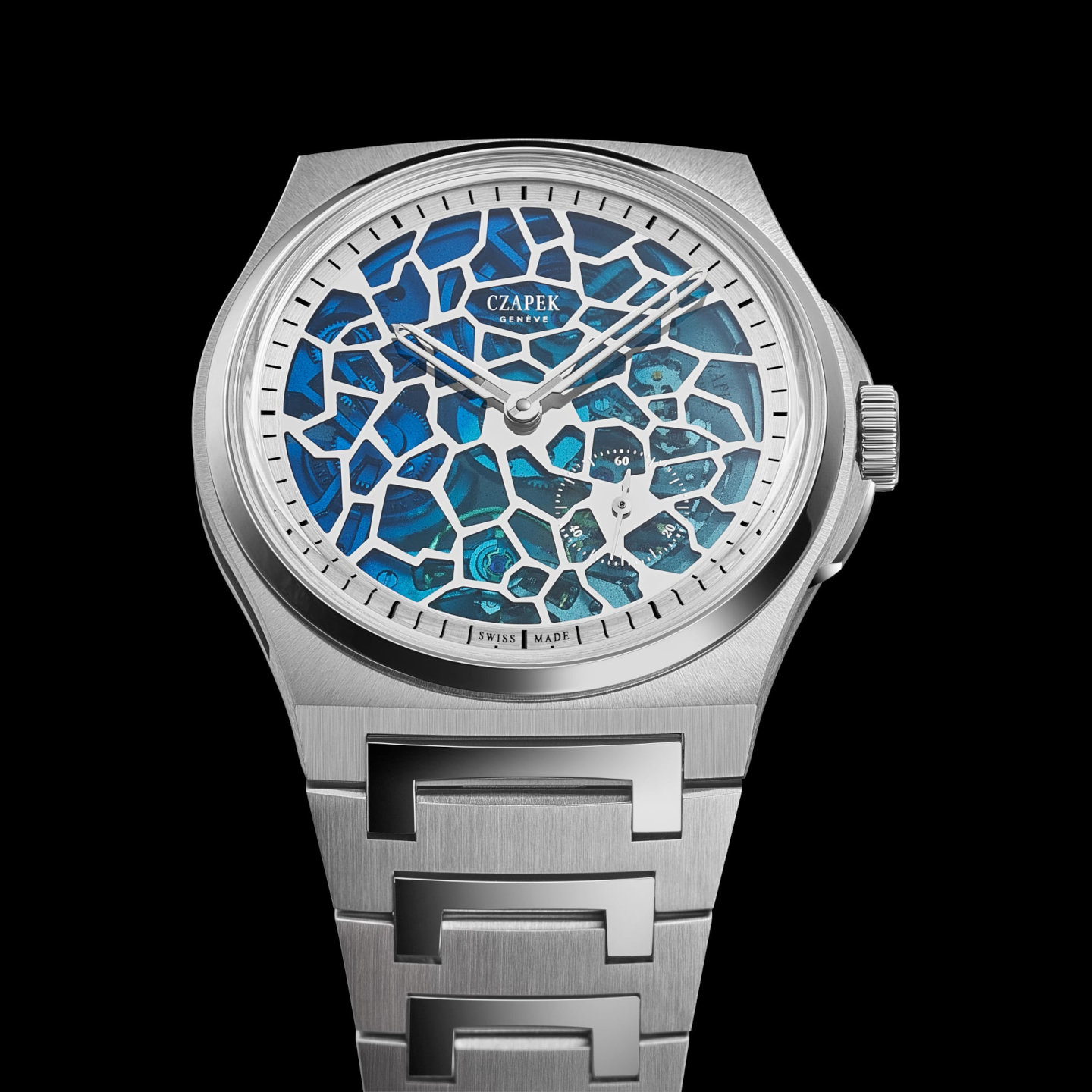When most watchmakers turn ten, they might release a special edition in blue or slap an anniversary logo on a caseback and call it a day. Not Czapek & Cie. This Geneva-based maison decided to mark a decade since its 2015 revival by doing something truly bonkers: creating a watch dial that works like a stained-glass window. Welcome to the Antarctique Plique-à-Jour, where “letting in daylight” isn’t just poetic – it’s literally what the dial does.
A Technique Older Than Your Great-Great-Great-Grandfather
Plique-à-jour is an enamelling technique that dates back to the Byzantine Empire in the 6th century. The name means “letting in the daylight” in French, which perfectly describes what happens here. Imagine creating a tiny stained-glass window, but instead of leading, you’re using gold cells filled with transparent colored enamel. No backing, no support – just enamel suspended in metal frames, fired at a scorching 900°C and somehow not falling apart.
This isn’t your average dial decoration. It’s the kind of work that only a handful of workshops worldwide can still pull off. Why? Because everything about it is ridiculously difficult. Each color needs precise formulation to achieve the right hue and transparency after firing. Every single cell must be filled individually, in the correct sequence, to create smooth color gradients. One wrong move during firing and the whole thing cracks. Then comes the polishing – done gently, progressively, like you’re defusing a bomb made of glass and precious metal.
The Transparency Game-Changer
Here’s where Czapek’s version gets extra special. Traditional plique-à-jour enamel usually has some opacity because air bubbles form during the process. But the technique used here achieves complete transparency. This means you can actually see through the dial to the movement beneath. It’s like having X-ray vision, except more artistic and less likely to give you superpowers.
Xavier de Roquemaurel, Czapek’s CEO, explains that this transparency creates “a direct visual connection between art and mechanics.” Translation: you get to watch your watch working while also admiring what looks like a miniature cathedral window on your wrist.
It Takes a Village
Creating these dials required a small army of specialists. MD’Art built the metal structure. Bagues-Masriera handled the enamel application and the nerve-wracking high-temperature firing. PBMC took care of the delicate polishing and thickness adjustments, working bit by bit to avoid cracking the enamel. Finally, MD’Art returned for the finishing touches – pad printing, attaching dial feet, and final surface work.
Every dial emerged from this process slightly different, making each of the ten pieces genuinely unique. Not “unique” in the marketing sense, but actually unique because that’s what happens when you’re working with materials this temperamental.
The Movement Deserves the Spotlight
Thankfully, Czapek didn’t pair this transparent masterpiece with a boring movement. Inside beats the Calibre SXH7, a skeletonized automatic movement that looks almost as intricate as the dial itself. Built in their La Chaux-de-Fonds manufacture, it features a micro-rotor made from 100% recycled platinum, mounted on ball bearings for smooth winding.
The movement shows off 18 internal angles, hand-chamfered edges, sandblasted bridges, and diamond-cut sinkholes – basically, all the finishing techniques that make watch nerds weak in the knees. Running at 4 Hz with a 60-hour power reserve, it’s visible through both the transparent dial and the sapphire caseback. This watch is an exhibitionist in the best possible way.
Ten Pieces for Ten Years
Only ten examples of the Antarctique Plique-à-Jour will be made, each carrying the Czapek anniversary logo on the caseback. It’s the second of four special pieces created for this milestone, following the Antarctique Tourbillon launched in April.
The watch debuts at WatchTime New York 2025, where it will either convince people that traditional craftsmanship still has plenty to say in modern watchmaking, or simply make them wonder why their wrists don’t have tiny stained-glass windows on them yet.
For a brand that’s only been back for a decade, Czapek is making some bold statements. But when you’re creating dials that required Byzantine-era techniques, collaborative craftsmanship from multiple specialist workshops, and the patience of a saint, bold seems about right.



Leave a Reply